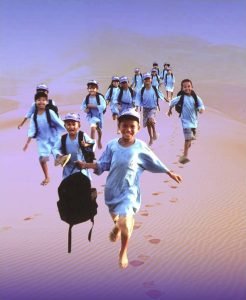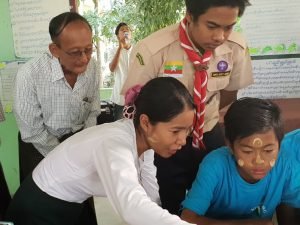NFE Programs
MLRC NFE programs (NFPE and NFME) are the only Equivalency programs which guarantee to complete the basic education and to continue for highereducation for OOS Children and Youths.
MLRC NFE programs focus on three strategic areas- “Advocacy, Capacity building, Participation” and applies inclusive approach including interventions with local community throughout the program implementation and operation.
MLRC NFE programs take Gender Considerations throughout the process. NFE Curriculum and learning materials are developed with gender sensitive approach in order to benefit both genders equally. Parents and guardians are encouraged to enrol girls for empowerment.
Flexibilityis provided through local decision on determining choice of time and venue for NFE centers, so as not to disfavor children who need to work part-time and to take into consideration the distance between NFE centers and participants home/workplace.
Project Design
MLRC has carefully integrated the following activities into the NFE project designs for the successful program implementation and the learners’ achievement
– Capacity Development Training for Teachers/Facilitators
– Monitoring with three main focus (IPO – input, process and output) regularly conducted by the township monitors, teachers and learners to discuss learners’ interest, performance and diffculties.
– Review, Preview and Feedback on the teaching/learning process and administrative support undertaken at each semester to gauge the achievement and to prepare the WayForward Action Plan.
– Focus Group Discussion (FGD) with stakeholders through a Social mobilsation/site visits of central committee members is made regularly and systematically
Learning Approach and Methods
Applying a learner centered approach, NFE programs focus on the learners’ participation, performance portfolio and checklists of learners’ skills. Learner must actively participate in the classroom, self-study and group works.
Interactive methodology and activities are employed throughout the courses. Teaching Instructions are delivered through self/group/classroom learning, group discussion, distance/project learning activities. They make learners actively participate in the classroom (think, find/gather facts, discuss, present and produce) and become confident with the innovative learning skills.


